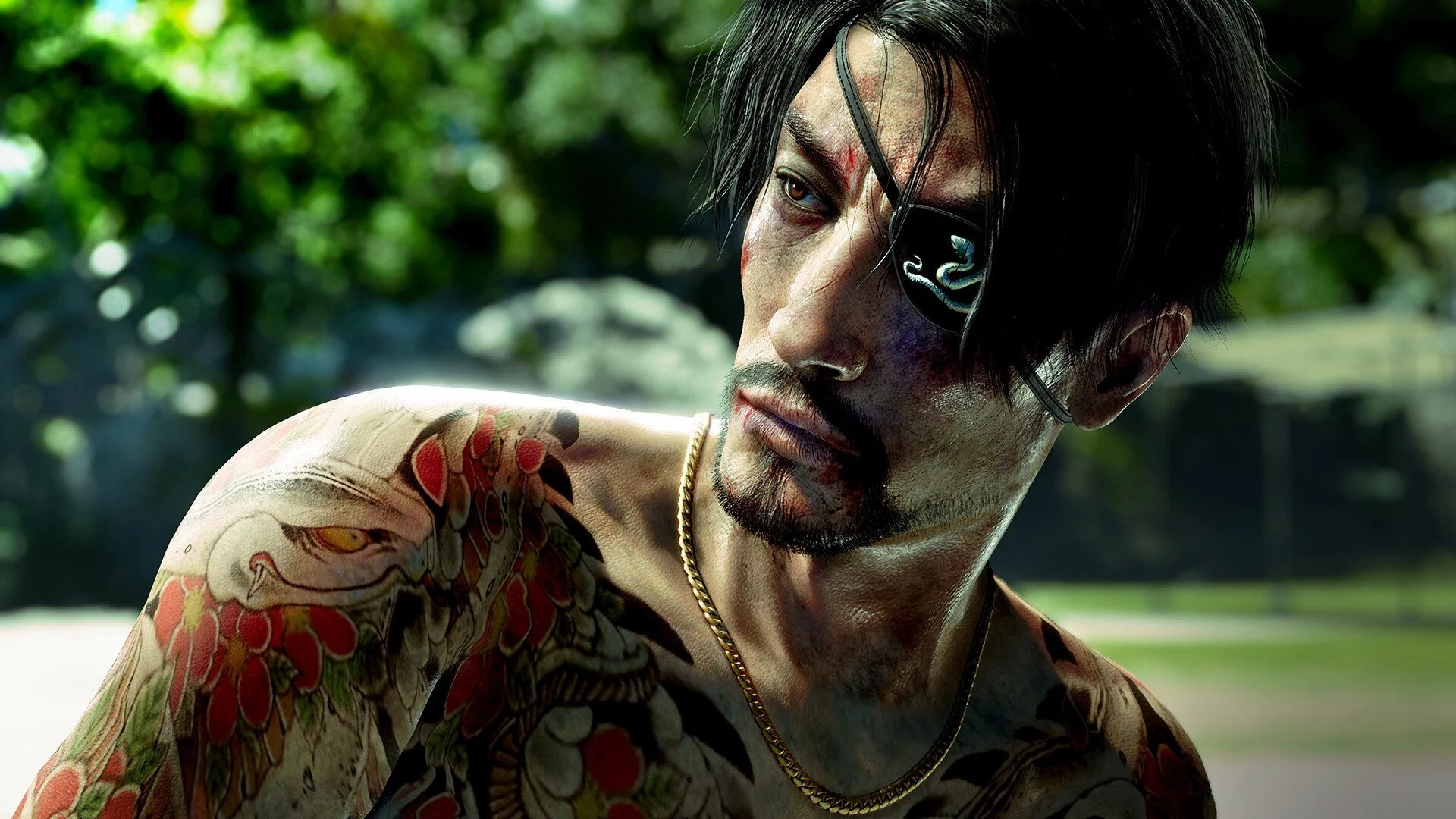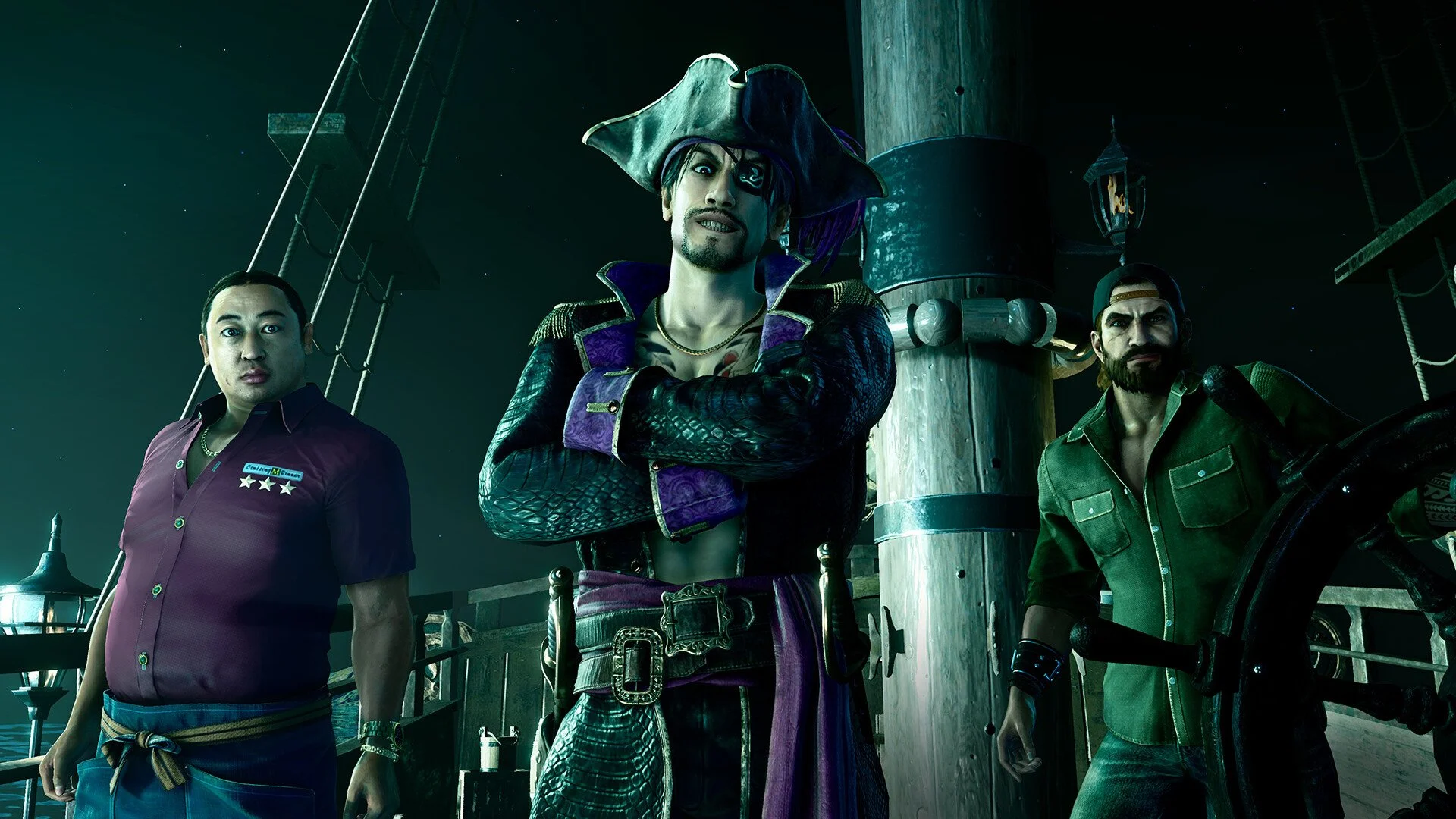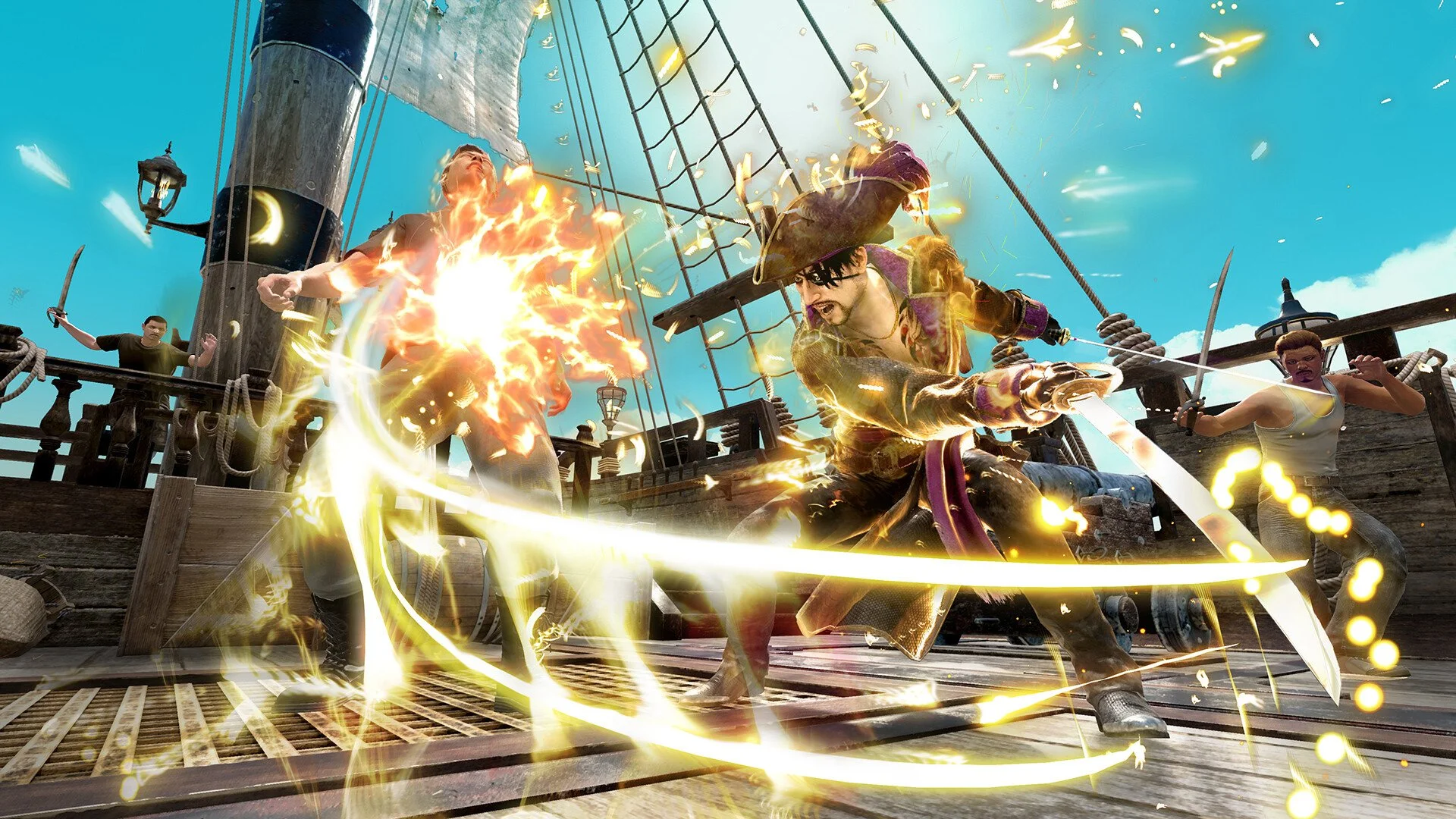Why's all the rum gone?
With Like a Dragon: Infinite Wealth taking the series to the sunny beaches of Honolulu and away from the turf war violence that has made up the Kamurocho saga, I wasn't surprised to see Yakuza in Hawaii refreshing the newly added environment. That said, a starring vehicle for Goro Majima with a pirate aesthetic, well, that was unexpected. As RGG has made a career of bringing life to the same location for over 20 years, Yakuza in Hawaii is a solid entry that can feel thin on its own ideas but nonetheless has some incredibly fun moments and some strong combat that allow this new adventure to set sail.
Series favorite, Goro Majima, wakes up on a beach with no recollection of who he is or how he got there. He is immediately welcomed by Noah, a young inhabitant of Rich Island, and his pet tiger, Goro. It doesn't take long for Majima to acclimate to his new surroundings and promise Noah a life of adventure. And as luck would have it, Majima commandeers a pirate vessel in order to travel to Honolulu in order to make that happen. While that approach may come off as sounding a bit light and breezy, the story eventually devolves into a credible and vicious threat to Majima and crew.
While treasure hunting becomes a major component of this tale, it soon becomes one about what Majima was up to before the accident that left him on Rich Island without his memory. The story also ramps up when the group travels to Madlantis, a pirate’s haven full of naval ship battles, commerce, and plenty of activities to keep you occupied. However, it is those naval battles that you'll need to tackle as you build up your ship and crew, making them sturdy enough to handle rough waters as you begin to dig deep into a treasure that has many eyes on it.
Eventually, you'll increase your ship's capabilities and begin to recruit those to server aboard. You'll manage a crew on the deck of your ship as well as those who join you when you wage war against a downed vessel, leaping from deck to deck and laying waste to your opponent. While the ship recruiting is very easy, with very little resistance in convincing the common man to take up a sword and fight over some treasure, a few will require that you embark on a short quest to prove your worth.
In typical Yakuza fashion, sub-stories fill up the bulk of your non-story time as you'll naturally encounter these moments as you explore Madlantis and Honolulu. Many of your recruits are returning characters from Infinite Wealth, allowing their shenanigans to accompany them to your vessel. You can even have Kiryu and Ichiban join as well; however, they are not technically present or part of the story. In fact, having Kasuga on the ship makes no sense given where one part of the story ends up. Still, seeing them battle on the ship is rather enjoyable, along with a lot of favorites from Infinite Wealth and beyond.
While the bulk of the game takes place on the recycled Honolulu map, so do many of the game's activities and mechanics. In fact, many of the same activities you experienced in Infinite Wealth return, with little to no changes, making them lose a bit in the repetition. While I wouldn’t go as far as saying the inclusion of Honolulu feels there to pad the length of the game, it can border on this statement, given Infinite Wealth was only a year ago and the extreme length of the game make you explore every knook and cranny of that new map.
That said, you'll still use the same methods of transportation to get around, and while ship combat does break up the familiar territory presented in the game, it does feel in part to what previous Yakuza games have felt when revisiting the same locations. Where Yakuza has endured, is by making those moments, those places, and those people, memorable. Thankfully, despite the silly nature of a pirate vessel bringing them altogether, it nonetheless has a certain charm to it that works here, even if I wish the Hawaii environment felt a tad more fresh than what we have gotten here.
Ship combat, which is a huge component of this adventure, is fairly impressive, if a bit basic. Still, for as thin as its offering is, it is leagues better than Ys: Nordics and even Skull and Bones, with the latter being built solely around ship combat. Here, you can not only take part in naval warfare, you can explore islands for treasure, fighting enemy pirates in the process. Ship combat has your central machine gun, two cannons on each side of the ship, as well as being able to fire a rocket launcher from the deck of your ship, a mechanic I forgot about entirely after it was shown to me.
Your ship, and its capabilities, can be further upgraded as you procure to the materials, rank, and money to see it happen. This means new cannons, machine guns, and swapping up its entire look is rather simple and easy to do. The customization is pretty decent, with the majority of features and designs you would expect. In fact, you can customize the sails to feature the developer’s logo or past games, it's a riot.
Apart from a short-fused turbo that allows you to drift, you'll have burst lanes that slingshot you ahead, picking up boat components that litter the water. You'll find numerous battles on the open seas as well as water-born shops that sell some of the components that you'll need to upgrade your ship. And just who does these upgrades? Well, fans of Infinite Wealth will enjoy seeing their favorite mechanic back and willing to help out.
As for Majima himself, he has two combat styles here that offer some of the best combat the series has seen. Unlike Infinite Wealth, Majima’s journey will tickle the itch of prior Yakuza adventures as it has the real-time combat the series was known for before Ichiban Kasuga began his own journey. This beat’em up combat system allows access to to two fighting styles; Mad Dog, which is Majima’s signature style, and Sea Dog, which embodies the pirate nature of Majima’s new path. This allows him to wield dual cutlasses and pistols, not to mention summoning ghost sharks to clear the field.
Majima is known as the Mad Dog of Kamurocho, his fearsome moniker in the criminal underworld. This style is a series of punches, kicks, and knife strokes to make short work of his target. And with mid-air combo attacks to dish out violence in the air, there is a lot this combat system has to offer. Sea Dog; however, allows Majima to embrace the pirate lifestyle as you hack and slash through swarms of enemies in an almost Dynasty Warriors fashion. This style is my personal favorite as it felt more built around what the game was wanting from me. That, and it fit the tone the narrative was embracing.
Each combat system, as was the case with the previous games with Kiyru, allows you to upgrade those styles with additional combo strings and overall damage. Some upgrades are shared across the entire board such as counters and guards, whereas the upgrades to each combat system allows each combat system to deepen tremendously. From more power to the Mad Dog’s uppercut, to increasing the amount of shadow dopplegangers, you can also improve your heat actions for unleashing far more carnage. Sea Dog sees upgrades to improving your chain hook attacks or the range of your cutlass boomerang attack, which sees you throwing your swords out for a ranged attack.
From dishing out street justice to taking to the high seas, there is a nice trimmed focus with Pirate Yakuza in Hawaii that I appreciate. It’s slim, but Infinite Wealth standards, justifiably so, clocking in at around 20-25 hours, depending on how in-depth you get with all the pirate theatrics. The story does introduce some compelling characters in Raymond Law, voiced by Samoa Joe, Queen Michele, voiced by Debra Wilson, and Naomi, voiced by Monique Shi, who was likely the standout performance here. While Majima was always a character I experienced in Japanese, I do have to say that I didn’t get on with Mathew Mercer’s take here. He gets some of the giggles and yells fine enough, but the voice just didn’t suit him.
You also get to know a great deal about some of your supporting cast, such as Noah and dad, Jason, but apart from Noah suffering the same issue that most kids have in games, Jason has a arc that never really felt well executed. I also found it distracting that his design was the spitting image of Luke Danes from Gilmore Girls. And if you think I am reaching a bit on that, there is a whole subreddit about this connection. Regardless, the support cast is fine enough, but no one really stuck out to really win me over, apart from maybe Goro. The tiger, not the Yakuza.
Given how quickly RGG can turn around a game, especially as this is the sixth Yakuza game in five years, you sort of get what RGG has done here if you are aware of their history. Visually, the game is fine enough for what it is doing. It’s not a next-gen masterpiece, but the series faithful know what they are getting here. Similar to previous entries like “The man who erased his name”, this is a small side story that looks to expand upon key moments the series is fleshing out, given the fall of the Yakuza in Like a Dragon. And, with where this story wraps up, I’m interested to see how Majima, and those present in the game’s final moments, look to play out their respective futures.
Developer - Ryu Ga Gotoku.
Publisher - SEGA. Released - February 21st, 2025. Available On - Xbox One Series X/S, PS4/PS5, PC. Rated - (M) - Blood, Strong Language, Suggestive Themes, Violence. Platform Reviewed - PC/Steam Deck. Review Access - A review code was provided by the publisher for the purpose of this review.
















Jeff is the original founder of Analog Stick Gaming. His favorite games include The Witcher III, the Mass Effect Trilogy, Hi-Fi Rush, Stellar Blade, Hellbade: Senua’s Sacrifice, and the Legend of Heroes series, especially Trails of Cold Steel III & IV.